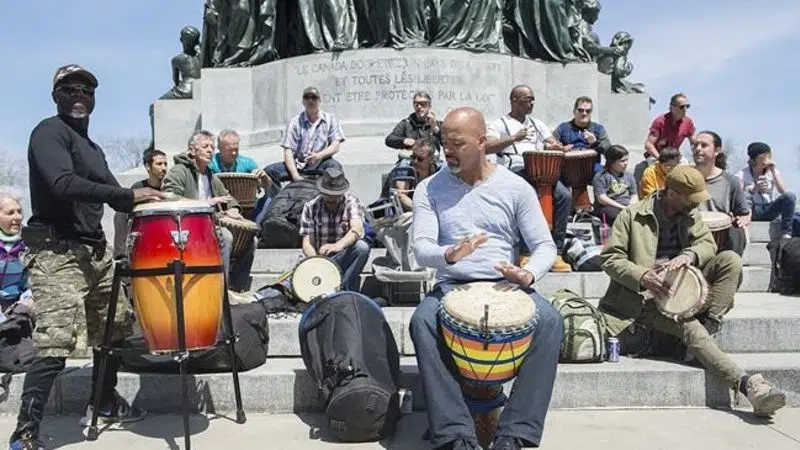
Montreal’s tam-tams could be 40 years old, but origin remains contested
MONTREAL — Every Sunday afternoon from spring through fall, hundreds of people gather on the slopes of Mount Royal for the tam-tams, a loosely organized weekly festival of drumming, dancing, and outdoor picnicking designed to soak up the most of Montreal’s short outdoor season.
Named for the drum beats that characterize its soundtrack, the bohemian gathering has become a must-visit for tourists as well as locals, who dance, play or lie on picnic blankets to the sound of dozens of beating drums.
Nobody knows exactly how one of Montreal’s signature cultural events got started, according to an ethnologist who has studied the festival and says it could be celebrating its 40th anniversary this year.



